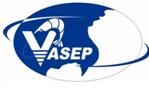(seafood.vasep.com.vn) Abnormal dead fish event in 4 coastal central provinces (Ha Tinh, Quang Binh, Quang Tri and Thua Thien Hue) does not affect supply and safety of raw materials for seafood exports ... So quality of marine products to export are assured safe and stable.
 |
VIETNAM ASSOCIATION OF SEAFOOD EXPORTERS AND PRODUCERS (VASEP)
Ho Chi Minh City, June 2nd, 2016
|
PRESS RELEASE
Vietnam marine products for exports keep stable quality
According to The National Agro-Forestry-Fisheries Quality Assurance Department (NAFIQAD), on 24/5/2016, EU authorities sent alert document number 16-814 to EU member countries about the abnormal dead fishes in Vietnam and offered members tightly control marine product shipments imported from Vietnam.
The EU alert has cited sources for reference: https://en.wikipedia.org/wiki/2016_Vietnam_fish_kill. that summarized information about the phenomenon of dead fish in 4 coastal central provinces (Ha Tinh, Quang Binh, Quang Tri and Thua Thien Hue) and also confirmed an undetermined cause. However, this information is also disturbing seafood importers in the EU for the quality of the seafood export.
In fact, the main fishing grounds supplying raw material for Vietnam seafood exports include provinces from Da Nang city to South Central (Binh Dinh, Khanh Hoa, Phu Yen, Binh Thuan, ...) and the South of Vietnam (Kien Giang, Ca Mau, ...), and fishes are caught by large-capacity ships in off-shore fishing grounds. Material sources of the localities provide for most processing and export of main marine items such as crab, surimi, tuna, cephalopods and other fishes. And many businesses are processing for export from raw materials imported from other countries.
Ministry of Agriculture and Rural Development (MARD) had directed to implement surveys, take samples and has confirmed that the off-shore fishing areas (beyond 20-30 miles from shore) in the 4 provinces are safe.
MARD has directed to carry out necessary measures to assure environmental hygiene and food safety for domestic consumption and exports. Food safety control authorities in mentioned-above 4 provinces (Sub-departments of food safety, Sub-departments of agriculture - forestry –fisheries quality assurance) intensifying controlling fishing activities, sampling seafood products at landing sites to check food safety criteria as defined by Vietnam and international standards.
Seafood processing and exporting establishments are required absolutely not to purchase dead fish; applying intensified controlling regime; actively sampling for food safety criteria testing (mercury, lead, cadmium, arsenic) for each raw material lot. So far, along with tight supervision of NAFIQAD, processors and exporters have seriously implemented the control the criteria as well as enhanced traceability measures to ensure stable quality of exported products.
Therefore, abnormal dead fish event in 4 coastal central provinces (Ha Tinh, Quang Binh, Quang Tri and Thua Thien Hue) does not affect supply and safety of raw materials for seafood exports ... So quality of marine products to export are assured safe and stable.
In recent years, seafood exports of Vietnam has made great progress with the average growth rate of 15.6% per year. Thanks to this, Vietnam ranks the 3rd out of the largest seafood exporters in the world, accounting for over 5% of the market share. Since 2000, exports of seafood from Vietnam have reported the positive growth, more than four-fold from nearly US$1.5 billion in 2000 to US$6.57 billion in 2015.
In 2015, Vietnam seafood was destined to 164 markets with the participation of over 600 exporting enterprises. Among them, the top 100 largest companies took up 72% of the total export sales. The number of plants recognizing the standard eligibility and refrigerating capacity increased rapidly between 2001 and 2015.
Quality and food safety are always prioritized in fisheries management agencies and export companies to maintain traditional markets and grow into new markets. Vietnam seafood exports to the EU's three main market covered 18%; the U.S with 20%; Japan with 16% and some potential markets such as China (9.4%) and ASEAN (7.6%) .
Along with the advantage of raw materials, production capacity, good competence and processing technology, Vietnam production and exports of marine products contributed over 30% of the seafood export value of the country in recent years.
According to the statistics of General Department of Vietnam Customs, in 2015, exports of Vietnam's marine products (tuna, squid, octopus, crabs, dried fish, and other marine finfish) reached over US$2 billion, making up 33% of total seafood export turnover. Seafood exports in Jan-Apr 2016 estimated at US$2 billion, up 6.1% over the same period last year, in which, the marine product exports hit US$646 million.
Currently, raw materials for processing and exporting remained stable thanks to climbs in capture production. The favorable weather as well as building high-capacity, iron ships designed for offshore fishing under the Government Decree 67 facilitated the fishing activities.
The total capture output in the first five months of 2016 hit 1,298 thousand MT, up 2.8% year on year. In which, marine catch estimated at 1,235 thousand MT, up 2.9% compared to same period of 2015. In the three provinces (Binh Dinh, Khanh Hoa and Phu Yen), tuna fishing reached 9,333 MT in the first 5 months of 2016.
Besides, imports of raw materials also played an important role for the seafood processing enterprises. In 2015, they contributed US$634 million to the total seafood export turnover of over US$2 billion. In particular, imports of tuna were US$215 million, other marine finfish with US$351 million, cephalopod with US$34 million, crabs with US$22 million, and bivalve mollusks with US$11 million.
In QI/2016, imports of raw marine products in Vietnam reached US$139 million, presenting 60% of the seafood import value. Of these, imports of tuna touched US$36 million, other finfish with US$85 million, cephalopod with US$8.7 million, crabs with 5.5 million and bivalve mollusks with nearly US$3 million.
This year, Vietnam seafood exports expected to increase over last year, thanks to a stable supply and demand recovery in major markets. In which, tuna exports predicted to go up 12%; cephalopod exports up 10%; and crabs, surimi, other finfish and dried fish up 13% from 2015.
VIETNAM ASSOCIATION OF SEAFOOD EXPORTERS AND PRODUCERS (VASEP)